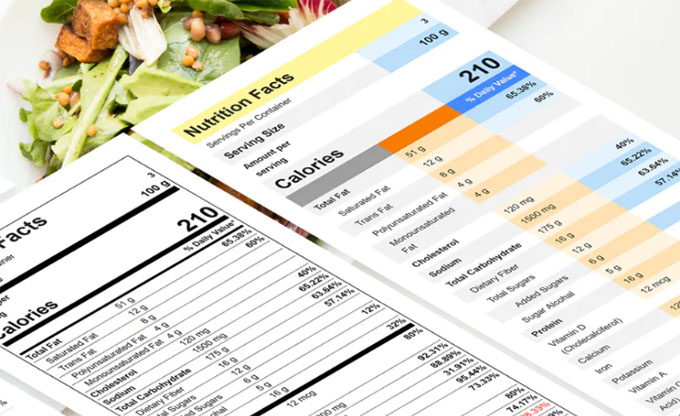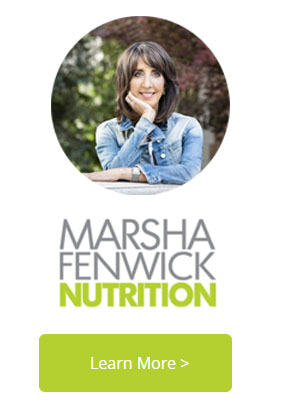Food Label Reading – What Really Matters
1. SUGARS
I believe one of the most important items on food labels is the sugar content. Sugar is by far the most detrimental thing you can consume for your health and can lead to weight gain, food addictions, and chronic health concerns, metabolic disease, diabetes, cancers, digestive issues, and more. A common question asked is how much sugar can I consume? The AHA suggests an added-sugar limit of no more than 100 calories per day (about 6 teaspoons or 24 grams of sugar) for most women and no more than 150 calories per day (about 9 teaspoons or 36 grams of sugar) for most men. Well, you know what I say… the less sugar the better, unless it comes from nutrient dense sources like fruit or vegetables. Just do your best with becoming more aware when reading labels and know that 4 grams of sugar = 1 tsp.
2. CARBOHYDRATES AND FIBER
Next after you check out the sugar, look at the total carbohydrates. Sugar, fiber, and other carbs all fall under the carbohydrate category, and they all affect your insulin in a different way. Your body can use fiber to slow down digestion, regulate your blood sugar, and help with weight loss and other health concerns. Sugar, on the other hand has no fiber, and is purely glucose, fructose, or sucrose, and can be used as fuel or stored as fat. This means your glycemic index or glycemic load rises quicker and your insulin levels too which may lead you to crave more as a vicious cycle. It’s why food companies add sugar to your food to increase the addiction and food cravings. So, take a look at the total carbs and see how much of those carbs come from fiber. FIBER IS YOUR FRIEND. The more, the better is generally the case. Whatever is left over is either sugar, or “other” carbs. Optimally, if food is in a package, I recommend that you aim for at least 5 grams of fiber per serving or a 3;1 Carb /fiber ratio.
3. FAT
Healthy fats are your friend and understanding where they come from and portion size is key to satiation and improving hormones and brain health! Under the Total Fat portion, you will see a breakdown of monounsaturated, polyunsaturated, and saturated fats. Not all labels list all three of these, but many do. Some also list trans fats, which should always be 0. Optimally you want most of the fats to come from monounsaturated fats. Polyunsaturated fats are also fine, but shouldn’t be in the form of vegetable oils, sunflower seed or processed oils like canola. Monounsaturated fats from raw nuts, seeds, avocados, dark chocolate, and olive oil, are healthy options. Not all saturated fat is the enemy especially if it is plant based which can be good for heart health. Anytime you buy a processed food, be sure to stay clear of anything with trans fats, hydrogenated or vegetable oils as they are inflammatory.

4. PROTEIN
Protein is an essential macronutrient to look for on food labels as it stabilizes your blood sugar, increases satiety of your appetite, and can help boost your metabolism. Everyone’s needs are different depending on factors such as age, gender, exercise and health concerns. A general rule of thumb is 15 – 20 grams of protein per meal and 5 grams of protein for snack. Hemp hearts, edamame, organic tofu or tempeh, collagen, quality protein powders are some examples of plant protein which can be beneficial for overall health as well as other quality proteins such as fish, eggs, organic chicken and grass fed meat. Ideally, you want your protein to come from whole food options.
5. INGREDIENTS
This is can be an eye opener when you start counting ingredients, ie. the fewer the better, and max of 5 ingredients as a rule of thumb. Many food companies include ingredients like soy protein, soy isolate, high fructose corn syrup, carrageenan, additives, preservatives, and other highly processed ingredients added to foods just to make the nutrition equation come out the way consumers want to see it. Many of these ingredients are highly-processed ingredients and can be hard on digestion and lead to poor health outcomes.
Tip: If you don’t recognize each ingredient then leave it on the shelf!
6. SODIUM
Salt, fat and sugar are added to almost everything these days. Why? Because they make food taste good and are created as a PLEASURE TRAP… leave you wanting more. Sodium is not the enemy unless you are eating it in processed foods such as canned soup, cold cuts and in processed foods and many drive-throughs. Good quality salt such as Himalayan salt or sea salt contain minerals that your body many require. Optimally, you want the sodium count of your foods to be less than 200 mg, or preferably 100 milligrams per serving. Better yet, buy foods with no added salt like fresh fruits and vegetables, along with whole grains, beans, legumes, nuts, seeds, and healthy fats.
7. SERVING SIZE
We have been taught to look at calories in our food as a large part of food labeling. However, understanding food quality, nutrient density and portion size is essential. Ask yourself… is the serving size on the label the actual amount that you will be consuming? How much popcorn or potato chips will you eat in one sitting?
It may not be easy, yet understanding food labels and strategies can lead to positive and healthy choices.
Which one of these 7 points resonated with you? Leave a comment below!
Marsha Fenwick, C.N.P. R.R.T.
Marsha is not your typical nutritionist. She began her career 20 years ago as a Registered Respiratory Therapist. Later, she earned her certifications as a Registered Nutritional Consultant Practitioner, Certified Nutritional Practitioner, and Registered Orthomolecular Health Practitioner. Marsha is also a Certified Cancer Coach. Her clinical practice specializes in: sustainable healthy weight loss, digestive health, women's hormones, diabetes, heart health, and cancer prevention and recovery. For more information and to book a FREE 15 minute consultation go to www.marshafenwicknutrition.com







